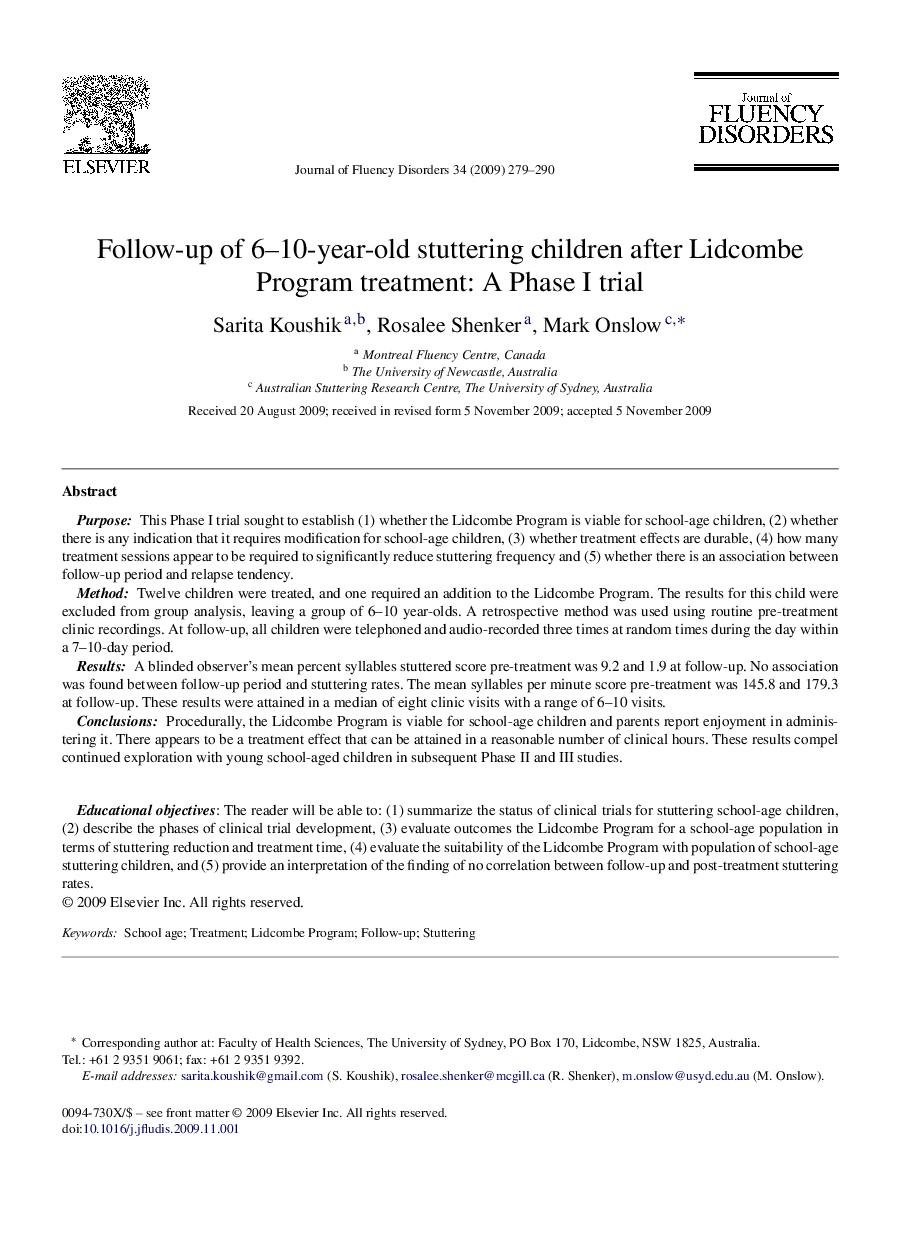| Article ID | Journal | Published Year | Pages | File Type |
|---|---|---|---|---|
| 911481 | Journal of Fluency Disorders | 2009 | 12 Pages |
PurposeThis Phase I trial sought to establish (1) whether the Lidcombe Program is viable for school-age children, (2) whether there is any indication that it requires modification for school-age children, (3) whether treatment effects are durable, (4) how many treatment sessions appear to be required to significantly reduce stuttering frequency and (5) whether there is an association between follow-up period and relapse tendency.MethodTwelve children were treated, and one required an addition to the Lidcombe Program. The results for this child were excluded from group analysis, leaving a group of 6–10 year-olds. A retrospective method was used using routine pre-treatment clinic recordings. At follow-up, all children were telephoned and audio-recorded three times at random times during the day within a 7–10-day period.ResultsA blinded observer's mean percent syllables stuttered score pre-treatment was 9.2 and 1.9 at follow-up. No association was found between follow-up period and stuttering rates. The mean syllables per minute score pre-treatment was 145.8 and 179.3 at follow-up. These results were attained in a median of eight clinic visits with a range of 6–10 visits.ConclusionsProcedurally, the Lidcombe Program is viable for school-age children and parents report enjoyment in administering it. There appears to be a treatment effect that can be attained in a reasonable number of clinical hours. These results compel continued exploration with young school-aged children in subsequent Phase II and III studies.Educational objectives: The reader will be able to: (1) summarize the status of clinical trials for stuttering school-age children, (2) describe the phases of clinical trial development, (3) evaluate outcomes the Lidcombe Program for a school-age population in terms of stuttering reduction and treatment time, (4) evaluate the suitability of the Lidcombe Program with population of school-age stuttering children, and (5) provide an interpretation of the finding of no correlation between follow-up and post-treatment stuttering rates.
